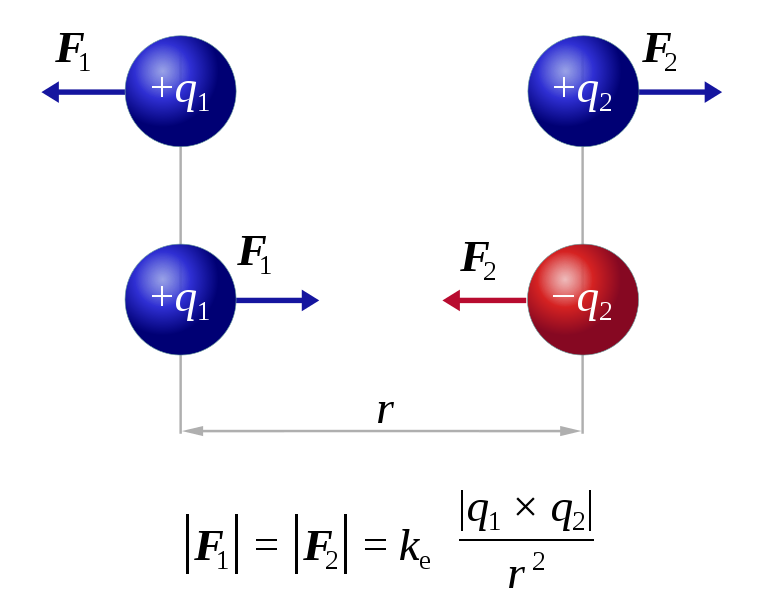Beyond Noether’s Theorem: The Physics of Broken Symmetries

Back in June, I wrote this article about Noether’s Theorem, the idea that continuous symmetries and conservation laws are intrinsically linked. But, while Noether’s Theorem is one of the most beautiful concepts in physics, symmetries themselves are equally as fundamental, and often similarly beautiful. And further, much of the coal-face of theoretical physics is a consequence of breaking such symmetries. So, what are symmetries? And what happens when we break them?
In the simplest terms, a symmetry is any action which leaves a system unchanged. These can be physical actions, such as a rotation or a translation, or they can be more abstract, such as time-reversal symmetry or spin space rotation symmetry (more on these later). As I detail further in my Noether’s theorem article, these symmetries can be discrete, or they can be continuous.
For example, a cube is rotationally symmetric for rotations of 90 degrees, but this symmetry does not hold for an angle of, say 45 degrees. Thus, a cube has a discrete rotational symmetry of 90 degrees (and multiples thereof). Conversely, a sphere has a continuous rotational symmetry, since it can be rotated by any angle — even those which are extremely tiny — and still look the same.
More generally, when we are talking about a physical system, we define a symmetry of a system as a transformation which leaves the Hamiltonian unchanged. In the previous article, we defined a system in terms of its Lagrangian, but rest assured, the Lagrangian and Hamiltonian are intrinsically linked by what is known as a Legendre transform, the details of which are for another time. I choose to use the Hamiltonian here since it is the object of choice for quantum mechanics, which will be the main focus of what follows.
To cut a long story short, the Hamiltonian is a description of the behaviour of a physical system. It in the position and momentum of a state and gives out the time evolution of that state depending on a given potential. States which are constant with time under said potential are the eigenstates of the Hamiltonian. Just as eigenstates of the position operator have a well-defined position, the eigenstates of the Hamiltonian have a well-defined total energy. Thus, these eigenstates are often called energy eigenstates.

An important property of a Hamiltonian is that it is Hermitian. This can be defined in a variety of ways involving matrices and complex conjugation, but for our purposes it means that the eigenvalues of the Hamiltonian — the energies of the eigenstates — must be real, and not complex. All operators which measure “classical” quantities, such as position and momentum, are Hermitian, which makes sense since we shouldn’t be measuring values of energy, position or momentum which aren’t real.
While this may seem like an innocuous property, its consequences are far-reaching. One of the most powerful is that the eigenstates of a Hermitian operator are orthogonal. This means that the eigenstates are independent — no eigenstate depends on any other — and it has the consequence that we can build any state as a superposition of eigenstates, as I detail for position and momentum eigenstates in this article.
Ok, so how do symmetries come into this picture? We said that a symmetry is a transformation that leaves the Hamiltonian unchanged. The eigenstates of a Hamiltonian for a given potential are uniquely determined, so if a transformation of the Hamiltonian leaves it unchanged, then the eigenstates must also be unchanged. If the Hamiltonian gives the time evolution of a state, and that state is a superposition of energy eigenstates which are unchanged by the transformation, then the time evolution of the state must also be unchanged. A symmetry is a transformation which does not change the behaviour of the system!
Phew ok, I think we need an example. Imagine a single electron in completely empty space. Such an empty space has no potentials present, and with no potentials, there can be no forces on the electron. Then, by Newton’s first law, the electron will continue to move with whatever velocity it had when we first put it in the space.
Now, lets perform a transformation. We move the electron, say, two metres to the right, but we leave its velocity unchanged. How does the electron behave now? Well, there are still no potentials around since we are still in the same completely empty space, so we would expect the electron to carry on moving in the same way as before the translation. So, the time evolution of the system — the movement of the electron within the space — is unchanged by the transformation, and we can say that translation is a symmetry of the system.
What does this look like in terms of the Hamiltonian? Well, with no potentials present, the energy of the electron depends only on its velocity, and thus its momentum, since the electron only has kinetic energy. The Hamiltonian gives the total energy of the system, so the Hamiltonian can also only depend on momentum, and importantly not on position. So, if we perform our translation, the Hamiltonian is unaffected since we only change the position of the electron. Translation thus fulfils our definition of a symmetry!

So, what are some examples of symmetries? Translational symmetry is actually one of the more common, particularly when working with crystals, which are defined by their periodicity and therefore spatial invariance over particular intervals. Closely associated is rotational symmetry, which we often encounter, perhaps unsurprisingly, in systems when rotation is involved. Notably, rotational symmetry is important in astrophysics, where spherical bodies lead to rotationally symmetric gravitational fields and the elliptical orbits we all know and love.
Alongside these continuous symmetries, we have several discrete symmetries. Among these is time reversal symmetry, which is where a system behaves the same if we run it “forwards” or “backwards” in time. Time reversal symmetry is conspicuous in its absence in the world around us, since our very experience of time having a “direction” is a consequence of the lack of this symmetry in many processes, most notably in thermodynamics.
Another, possibly less profound, symmetry is lattice inversion symmetry. This applies for crystal lattices, and is invariance under taking the “mirror image” of the lattice by setting all spatial coordinates to their negative.
If a system exhibits time reversal symmetry, each energy eigenstate has a time-reversed partner with the same energy but opposite momentum. Similarly, in system with inversion symmetry, each energy eigenstate has a partner with an opposite momentum whose energy is of the same magnitude, but negative.

What happens when we start to break these symmetries? First, we remove time reversal symmetry. Imagine that we confine an electron to a 2D plane, and that we apply a uniform magnetic field that’s perpendicular to that plane. An electron is a charged particle, and a charged particle moving in a magnetic field feels a force perpendicular to its velocity, the so-called Lorentz force, and we see that the path of the electron curves in the plane.
If we were to run this experiment with time reversed, we would see that the magnetic field was unchanged, but the initial velocity of the electron is reversed. The Lorentz force the electron feels is then the negative of the force experienced by the electron in the first example, and the path the electron follows is curved in the opposite direction. So, if the electron curved up in the first example, it would curve down in the second example. Thus, the electron behaves differently under the action of the magnetic field when time runs backwards compared to when time runs forwards. This means that a magnetic field breaks time reversal symmetry!
This idea can be applied to electrons moving in a crystal, which is a system which exhibits time reversal symmetry. In the simplest case, the time-reversed partner of the eigenstates is just the state with opposite spin. For every up-spin electron on the crystal there exists a down-spin electron of the same energy. We call this property spin degeneracy.
We know that if we apply a magnetic field, the time reversal symmetry of the system is broken, so we should see this spin degeneracy lifted. Or, in other words, under the influence of a magnetic field, the energy of up-spin electrons should be different to that of down-spin electrons.
And, as if by magic, this is what we see! The magnetic field reduces the energy of electrons with spins parallel to the field and increases the energy of electrons of electrons with spins antiparallel to the field. The partners now have different energies, and the degeneracy is lifted. This process, known as Zeeman splitting, can be seen experimentally in the splitting of absorption lines in elemental spectra in the presence of a magnetic field.
What about if we break inversion symmetry? A good example of this can be seen in physics on a honeycomb lattice. As mentioned in this article, a honeycomb lattice has two distinct types of sites, the A sites and the B sites. If we take the mirror image of a honeycomb lattice, we find that the A sites map onto the B sites. Inversion symmetry is maintained if the A sites and the B sites are the same, such as in graphene with its carbon-only honeycomb lattice. But if the A sites and the B sites are different atoms, such as in hexagonal Boron Nitride (hBN) where the lattice consists of alternating boron and nitrogen atoms, then inversion symmetry is broken.

We generally describe the behaviour of electrons on a crystal lattice by what is known as a band structure. This shows how the energy of the eigenstates of the Hamiltonian varies with the momentum of the state. For simple lattices such as graphene and hBN, we generally consider two bands, a lower energy valence band and a higher energy conduction band.
Now, we know that time symmetry requires that energy eigenstates have a partner with opposite momentum and the same energy, while inversion symmetry requires that energy eigenstates have a partner with opposite momentum and negative energy of the same magnitude. Generally, these two conditions can happily exist independently for most momenta. But for some momenta, they collide.
For any crystal lattice, there are certain momenta which are equivalent to their negatives. This is a direct consequence of the periodic nature of the lattice, and such momenta are generally referred to as high symmetry points.

If an eigenstate and its time reversed and inverted partners have the same momentum, such as at the high-symmetry points, then we require that the energy of the state equal its own negative. This is only possible if that energy is then zero. This means that we must have a band crossing at the high symmetry point, since a state in the valence band and its partner in the conduction band have the same energy of 0. Such a band crossing is called symmetry protected, since it arises directly from the symmetries of the system.
In graphene, we have both time reversal and inversion symmetry, which is why we have the famous Dirac points at the K and K’ high symmetry points. But, in hBN, we break the inversion symmetry. This removes the necessity for the energy eigenstates to have an energy of zero, and we expect that the band structure of hBN should have a bandgap at the K and K’ points. And, once again, this is what we observe.
The gap results physically from the difference in energy that the electron experiences when on a Boron atom compared to that when on a Nitrogen atom. This means that extra energy is required for an electron to move between sites, or in other words, extra energy is required for the electron to be able to conduct electricity. Thus, in hBN there exists an energy gap between the valence and conduction band at the K and K’ high symmetry points.
This difference in symmetry dramatically changes the electronic properties of the two materials. The symmetry protected Dirac point in graphene leads to one of the best conductivities of any known material, while hBN is an insulator with a resistivity comparable to diamond.

So far, we have considered scenarios where symmetries of a system are broken by external factors, such as magnetic fields, or where they never present in the first place like in hBN. But sometimes, a system is such that it conspires to break its own symmetries. This is the idea of spontaneous symmetry breaking.
When we examine a system in quantum mechanics, we often first consider its ground state. This is the behaviour of the system at zero temperature, and is the state of the system with the minimum possible energy. We obviously cannot observe zero-temperature behaviour directly, but for many systems behaviour in the ground state persists up to temperatures we can observe, or at least changes in a predicable way.
Generally, we expect the ground state of a system to exhibit the same symmetries as its Hamiltonian. The Hamiltonian which describes electrons on a graphene lattice exhibits both time reversal and inversion symmetry, and the ground state of electrons chilling on carbon atoms also has these symmetries. But, for some systems, the ground state breaks one or more of the symmetries present in the Hamiltonian. In other words, the natural state of the system does not have all the symmetries available to it! The ground state is the state of minimum energy, so we don’t need to add energy to the system to break these symmetries. We call such a process spontaneous, hence spontaneous symmetry breaking!
One classic example of spontaneous symmetry breaking is magnetism. Magnetism can arise in number of ways, but all rely on the alignment of electron spins to give a material an overall magnetic moment. In most cases, this is in response to an external magnetic field, but in a few materials, interactions between the electrons give rise to a permanent alignment of their spins, leading to a permanent magnetic ordering. The spins can be parallel, in which case we have a ferromagnet such as elemental iron metal, or they can be in alternating directions, known as an antiferromagnet.
In general, such systems exhibit spin space rotational symmetry. In other words, there should be no “preferred direction” for electron spin to point which reduces the energy of the system. All magnetic orderings of a material break this symmetry, but only the case of a ferromagnet or an antiferromagnet is this the case without any external influence. Both states are therefore examples of spontaneous symmetry breaking.
Why does this occur? One way we describe systems with interacting spins is the Heisenberg model. This is a Hamiltonian where the energy depends only on the angle between two neighbouring spins and a scalar interaction energy. By convention, we give the Hamiltonian an overall negative sign. Parallel spins give a maximal positive contribution, while antiparallel spins give a maximal negative contribution. We can see the spin space rotational symmetry in the Hamiltonian, since the energy does not depend on the direction of any individual spin, only on its angle in relation to its neighbours.
We know that the ground state is the state which minimises the energy of the system. So, in the case of the Heisenberg model where we only consider energies from the spin interaction, the energy is minimised when the energy is as negative as possible. If the interaction energy is positive, then parallel spins will minimise the overall energy since the overall negative sign of the Hamiltonian is maintained. The ground state is then the state in which all electron spins point in the same direction.
If the interaction energy is negative, we minimise the energy by having all spins be antiparallel to its neighbours, since the negative interaction energy and negative overall sign cancel to give a positive sign, meaning that antiparallel spins now give an overall negative sign. Thus, the ground state[1] consists of alternating up and down spins on neighbouring sites. So, the only difference between a ferromagnet and an antiferromagnet is the sign of the interaction energy!
Now, Coulomb interactions, or the potential energy associated with the electric repulsion of two like charges such as negatively charged electrons, give a positive energy contribution in the Hamiltonian. Conversely, the kinetic energy of the electrons gives a negative contribution. The interaction energy, and thus the magnetic ordering, is often dependent on which of these factors “win”, since the spin properties of electrons come into play to ensure that the energy is minimised.

For example, if the coulomb repulsion between electrons on the same atom, known as the Hubbard interaction, is particularly strong, then the energy is minimised by preventing electrons from occupying the same sites. Recalling the Pauli exclusion principle, which forbids two electrons of the same spin from occupying the same site, then double occupation of sites can be prevented by ensuring that electrons all have the same spin, which produces a ferromagnetic system. We can predict this from the sign of the interaction energy, since the positive coulomb energy dominates the interaction, so we obtain a positive interaction energy.
There are many other fascinating examples of spontaneous symmetry breaking, from the Mott insulator transition in condensed matter physics to even the spontaneous breaking of gauge symmetries in the early universe to produce the Higg’s mechanism. But aside from wanton technobabble, what do we gain from a study in symmetries?
Symmetries provide a powerful tool in theoretical physics. As we have seen, we can make predictions about the behaviour of a system just from the symmetries it possesses. And, perhaps even more importantly, they allow a check on the validity of our models. If you produces a Hamiltonian which does not preserve a symmetry of the system in question, then chances are that you’ve screwed up somewhere along the line.
But also, symmetries are beautiful. Even ignoring Noether’s theorem, the physics which emerges just from the symmetries of a system is incredible. Look at graphene: the very property of the system which leads to its technological potential is intrinsically and fundamentally linked to the inversion symmetry of its crystal lattice. The simplicity of this connection is, in my opinion at least, fantastically beautiful.
[1] Being technical, the AFM state is not the ground state of the Heisenberg model with a negative interaction energy. Its in fact not even an eigenstate of the system! But it’s close to being the ground state and, since it provides an intuitive picture, we will ignore this distinction here.





